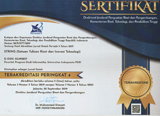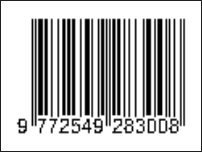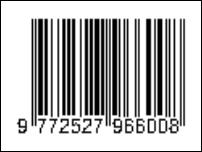Perbandingan Algoritma Binary Search dan Sequential Search untuk Pencarian Persediaan Stok Barang Berbasis Web
(1) national university
(2) Universitas Nasional
(3) Universitas Nasional
(*) Corresponding Author
Abstract
Inventory of goods is one of the most important assets of a company. So. there must be good internal handling for the large amount of data items in the warehouse. At this time, the existing system of goods reporting is still conducted manually. This can result in errors in data storage. Therefore, it is necessary to develop a website application for inventory that can help users to more easily store and find the items needed. The application is the one using binary search and sequential search algorithms for the process of searching for goods data to speed up data search. This study compares the binary search and sequential search algorithms. The testing process uses microtime to produce the fastest time. The results of the test carried out 50 times out of 500 data show binary search produced an average time of 0.0402524 ms and sequential search of 0.0519893 ms. Then, the next test uses the searching time complexity method with the best case with a binary search algorithm of 0.0125 ms and a sequential search of 0.11293 ms. The conclusion is that using the binary search algorithm has the fastest time compared to the sequential search algorithm.
Keywords
Full Text:
PDFReferences
A. D. Frayudha and S. Purwanti, “Sistem Inventory Stok Barang Optimalisasi Media Penyimpanan pada PT Multi Usaha Sejahtera Jaya Menggunakan Metode Goldbach Codes,” Elinvo (Electronics, Informatics, Vocat. Educ., vol. 5, no. 1, pp. 52–63, 2020, doi: 10.21831/elinvo.v5i1.31298.
T. R, Sientia. R, Puspitasari. F, “Sistem Informasi Persediaan Produk Telkomsel Dengan Metode Fifo,” Sensitek, no. September 2016, pp. 2016–2019, 2018.
A. Andri, “Penerapan Algoritma Pencarian Binary Search dan QuickSort pada Aplikasi Kamus Bahasa Palembang Berbasis Web,” J. Inform. J. Pengemb. IT, vol. 4, no. 1, pp. 70–74, 2019, doi: 10.30591/jpit.v4i1.1104.
L. Sitorus, “Algoritma dan Pemrograman,” Yogyakarta: Andi, 2015.
N. Imamah and M. I. Bahari, “Perbandingan Algoritma Sequential Search Dan Algoritma Binary Search Pada Aplikasi Kamus Bahasa Indonesia Menggunakan Php Dan Jquery,” J. Inform., vol. 08, pp. 1–6, 2021.
I. M. Habibi, S. Andryana, and S. Ningsih, “ALGORITMA BINARY SEARCH DAN SEQUENTIAL SEARCH PADA APLIKASI KOPERASI SEKOLAH ONLINE BERBASIS WEB,” J. Sist. Siber Sos., vol. 1, no. 2, pp. 63–72, 2022.
Y. Religia, “ANALISIS ALGORITMA SEQUENTIAL SEARCH DAN BINARY SEARCH PADA BIG DATA,” Pelita Teknol. J. Ilm. Inform. Arsit. dan Lingkung., vol. 14, no. 1, pp. 74–79, 2019.
M. H. Pristyawan, “Analisis Algoritma Sequential Search Untuk Mencari Data Mahasiswa Teknik Informatika Pada Sekolah Tinggi Teknologi Pelita Bangsa,” Skripsi, Sekolah Tinggi Teknologi Pelita Bangsa, 2018.
R. Y. Darmawantoro, Y. R. W. Utami, and K. Kustanto, “Implementasi Binary Search Untuk Data Obat di Apotek,” J. Teknol. Inf. dan Komun., vol. 10, no. 1, 2022, doi: 10.30646/tikomsin.v10i1.607.
O. Onsardi, M. Muntahanah, and R. Toyib, “Penerpan Algoritma Binary Search Dalam Pencarian Data Potensi Investasi Di Kabupaten Seluma Dengan Smartphone,” JSAI (Journal Sci. Appl. Informatics), vol. 3, no. 3, pp. 129–136, 2020, doi: 10.36085/jsai.v3i3.1160.
DOI: http://dx.doi.org/10.30998/string.v8i2.16475
Refbacks
- There are currently no refbacks.
Copyright (c) 2023 Hanzhalah Ramadhan

This work is licensed under a Creative Commons Attribution 4.0 International License.
STRING (Satuan Tulisan Riset dan Inovasi Teknologi) indexed by:

Ciptaan disebarluaskan di bawah Lisensi Creative Commons Atribusi 4.0 Internasional.
View My Stats

 Sertifikat Akreditasi
Sertifikat Akreditasi
















